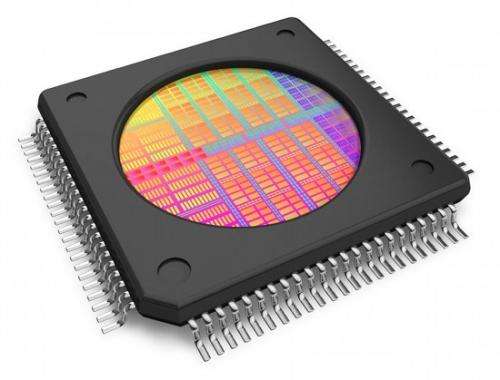December 2, 2012 weblog
Taiwan engineers defeat limits of flash memory

(Phys.org)—Taiwan-based Macronix has found a solution for a weakness in flash memory fadeout. A limitation of flash memory is simply that eventually it cannot be used; the more cells in the memory chips are erased, the less useful to store data. The write-erase cycles degrade insulation; eventually the cell fails. "Flash wears out after being programmed and erased about 10,000 times," said the IEEE Spectrum. Engineers at Macronix have a solution that moves flash memory over to a new life. They propose a "self-healing" NAND flash memory solution that can survive over 100 million cycles.
News of their findings appears in the IEEE Spectrum, discussing flash memory's limitations and the Taiwan company's solution. Macronix is a manufacturer in the Non-Volatile Memory (NVM) market, with a NOR Flash, NAND Flash, and ROM products. Before their solution announcement, though, many engineers inside and outside of Macronix were aware of a life-giving workaround: heat. The snag is that applying heat was not found to be practical. As the Macronix team put it, the "long baking time is impractical for real time operation." Although subjecting the cells to high heat could return memory, the process was problematic; the entire memory chip would need heating for hours at around 250 °C.
They redesigned a flash memory chip to include onboard heaters to anneal small groups of memory cells. Applying a brief jolt of heat to a very restricted area within the chip (800 degrees C) returns the cell to a "good" state. They said that the process does not have to be run all that often. According to project member Hang‑Ting Lue, the annealing can be done infrequently and on one sector at a time while the device is inactive but still connected to the power source. It would not drain a cellphone battery, he added.
Macronix estimates that the flash memory cells could beat the 10,000 cycle limit by lasting for as much as for 100 million cycles but a commercial product is not imminent. Instead, Macronix will present their approach—very high temperature in a very short time— this month at the IEEE International Electron Devices Meeting (IEDM) from December 10 to 12 in San Francisco. This is the forum for presenting breakthroughs in semiconductor and electronic device technology. Lue observed that in coming up with the approach, his team would not be able to lay claim to any new physics principle. "We could have done this ten years ago." He said it took merely a leap of imagination into a different "regime."
For their upcoming IEEE presentation, they said they propose and demonstrate a novel self-healing flash, where a high temperature (>800°C), and short time annealing are generated by a built-in heater. "We discover that a BE-SONOS charge-trapping NAND Flash device can be quickly annealed within a few milliseconds," they said. Their presentation is titled "Radically Extending the Cycling Endurance of Flash Memory (to > 100M Cycles) by Using Built-in Thermal Annealing to Self-heal the Stress-Induced Damage." The authors are H.-T. Lue, P.-Y. Du, C.-P. Chen, W.-C. Chen, C.-C. Hsieh, Y.-H. Hsiao, Y.-H. Shih, and C.-Y. Lu.
More information:
m.spectrum.ieee.org/semiconduc … s-100-million-cycles
www.his.com/~iedm/program/sessions/s9.html
© 2012 Phys.org

















